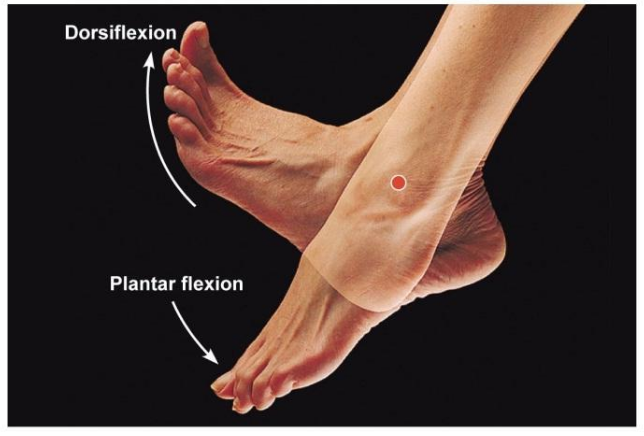
The Importance of Ankle Mobility and Dorsiflexion
Written by Kim McLaughlin
When is the last time you paid attention to the mobility in your ankles?
Do you spend any time in your pre-warm up or post workout stretching focusing on your dorsiflexion?
A little attention in this area can go a long way. In fact, improved flexion of the foot can help your squatting, sprinting, strength, and your ability to avoid injuries in the knee, hips and low back areas.
What is Dorsiflexion?
The ankle is a hinge joint that allows the foot to move in the sagittal plane. Within this plane, there are two specific movements; dorsiflexion and plantar flexion. The ability to move the top of the foot closer to the shin is called dorsiflexion.

Why is Dorsiflexion Important?
Dorsiflexion is important because it allows the tibia (the shin bone) to move forward freely. If the tibia is stuck in a vertical position, it can cause the top of our body to lean forward to make up for the lack of mobility in the ankle when squatting [1]. This is particularly apparent in front squats and overhead squats.
If our lack of mobility in the front squat and the overhead squat is there, this will directly affect our ability to get into a good position in the clean and the squat. It’s a downward spiral.
When our tibia is stuck in a vertical position and our chest is forward, this decreases our ability to create force through the hips to drive heavy loads. In essence, we’re unable to reach the maximum potential in our lifts because the direction of force is not being applied efficiently. If you watch the best squatters in the world, they have amazing ankle dorsiflexion and their chest is almost always in a vertical position above the hips. Force applied straight up and down is far greater than that force applied backwards, forwards, and then, eventually, up.
Dorsiflexion is also important for sprinters. The ability to pick the foot off the ground quickly (dorsiflexion) and to apply force when it strikes the ground (plantarflexion) can increase speed and efficiency when running as well [2].
Studies have been conducted to show that poor ankle mobility has had direct impact on many hip and knee injuries. A person with poor dorsiflexion is more likely to suffer from a torn ACL than someone with great mobility in that area [3].
Causes of Poor Dorsiflexion
Like anything else, there can be a number of factors contributing to poor dorsiflexion. A couple of the common ones are listed below:
- A lack of flexibility of the muscles in the calf. Perhaps they have shortened over time due to the raised heel in some shoes. (Ladies – this is a good reason to avoid wearing pumps all the time! Check out A Tale of Two Feet for more on this.)
- For many former field athletes, previous injuries to the ankle could be the cause of poor mobility there. Have your rolled your ankle in the past? Sprained it? These injuries can lead to tight joint capsules or scar tissue buildup [1].
- Any injuries to the legs that have caused even a temporary change in the way we walk can also lead to ankle mobility issues. Limping, favoring one leg over another due to knee injury or hip injury can cause issues in the ankle as well.
Whatever the case, paying a little bit of attention to this area in your warm-up routine or post workout stretching can only help the situation. Stay tuned for some tests to figure out if you suffer from poor dorsiflexion and some drills to help you figure out what to do about it.
Sources
[1] Imbo, William. “Ankle Mobility: Why it’s Important and How to Improve It.” Box Life Magazine 13 June 2014: n. pag. Web.
[2] ARCHER, L. (2006) Ways to improve the dorsiflexion and plantar flexion action of the foot. Brian Mackenzie’s Successful Coaching, (ISSN 1745-7513/ 32/ May), p. 5
[3] Fong, Chun-Man et al. “Ankle-Dorsiflexion Range of Motion and Landing Biomechanics.” Journal of Athletic Training 46.1 (2011): 5–10. PMC. Web. 31 Mar. 2016.